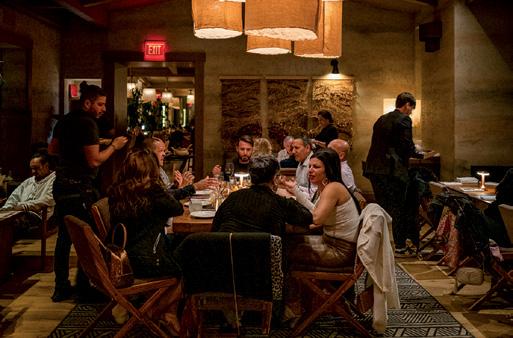
3 minute read
Going Global
DOMINICAN BANK, CHOCOLATE MAKER, SET UP OVERSEAS
Foreign investment is a two-way street, and these days, top Dominican companies are setting up overseas as well. Among them: the country’s largest commercial bank and its biggest producer of cocoa.
Banco de Reservas, the 82-year-old bank known as Banreservas, is setting up in Miami, part of an effort to facilitate links with the Caribbean nation, especially money sent back by Dominicans living abroad.
The state-owned bank opened its first overseas office in January in Spain, the center of the Dominican diaspora in Europe. It now awaits U.S. government approvals to open in New York and Miami, home to the largest Dominican communities in the U.S., says Banreservas administrator Samuel Pereyra.
Dominicans overseas play a significant role in their homeland’s success, sending back billions of dollars a year to family and friends and often buying second-homes or investment properties in the country. Their remittances often come when Dominican families need them most, for example, during the COVID-19 pandemic when tourism halted briefly and then took months more to recover. Remittances in 2021 topped $8 billion and rose to $10 billion last year, according to government data.
In Miami, Banreservas plans to open a representative office on Brickell Avenue near the long-time Dominican consulate. Besides remittances, the office will help with mortgages on Dominican properties and payments to Dominican exporters, among other services – often saving folks a trip back to the Caribbean for paperwork. The actual banking behind the services will be done in Dominican Republic.
In New York, the Banreservas office is slated for Washington Heights, an area in upper Manhattan where many Dominicans live. In all, the U.S. is home to more than 2 million people born in the Dominican Re- public or of Dominican heritage, making the group the fifth largest among U.S. Latinos.
From Cocoa Buyer To Exporter Of Gourmet Chocolate
New York is home to the first overseas locale for Rizek Cacao, the largest Dominican producer and exporter of cocoa, or cacao in Spanish, the main ingredient in chocolate. The family business opened a shop in Brooklyn to sell its certified organic chocolates, and keeps a warehouse to offer beans, cocoa butter, and other cacao ingredients to fellow artisanal chocolate makers.
The family’s story parallels how the Dominican economy has progressed – from farming to manufacturing, tourism, and logistics. It began in the early 1900s when two brothers from Palestine moved to the Dominican Republic, seeking opportunity.
They started out buying and selling rice, cocoa, and other farm products domestically, and later began farming the trees that produce cacao. Back then, exports of cocoa were reserved for strongman Rafael Trujillo, who ruled the nation from 1930 until 1961.

In the 1970s, Rizek Cacao became the country’s largest cocoa producer and top exporter of dried cocoa beans, selling to large chocolate makers globally. But the family saw potential in fermenting the beans to offer a product with greater value-added. In the 1990s, they built a sophisticated center to centralize fermentation and processing for their own beans and for other farmers. The facility now serves as a cocoa research center and attracts doctoral students from Florida, Italy, and beyond, says Massimiliano Wax, an international cacao expert who now works with the Rizeks.
Like varieties of grapes in wine, fermentation brings out distinct profiles of different types of cacao. Cocoa is not native to Dominican Republic, so the nation grows trees that came from Brazil, Colombia, Ecuador, and other nations, producing a wide palette of flavors and mixing “a fantastic cocktail” of chocolate, says Wax.


In the 2000s, the Rizeks began making their own artisanal chocolates from those blends, creating the brand Kahkow. Then, tapping surging tourism, they launched the Chocolate Museum in Santo Domingo’s colonial zone to help educate tourists and locals alike. In 2015, they added the Kahkow Experience at the museum, offering cocoa-related activities that include a film on cocoa history, a mini-factory to customize your own chocolate bars, and a studio to make soap from cocoa butter.
Fourth-generation Nadia Rizek, after finishing college in New York, started the
U.S. division to supply artisanal “bean-tobar” producers on the U.S. east coast. She launched the Brooklyn shop in 2019. The company has just added an outlet in Spain to supply “bean-to-bar” makers in Europe too.
“We want to accompany the evolution of the chocolate market,” says Wax, vice president of Rizek Cacao, which now employs more than 500 people. “Until some 10 years ago, chocolate was almost exclusively produced by big multinational companies. Now, smaller artisanal chocolate producers are proliferating worldwide.” Serving those customers surely will require lots of logistics, the next Dominican frontier. l










